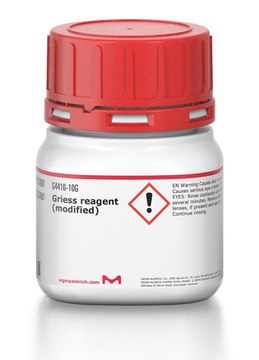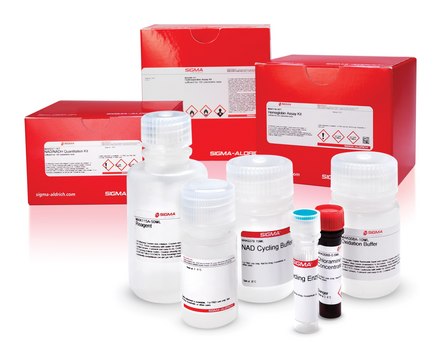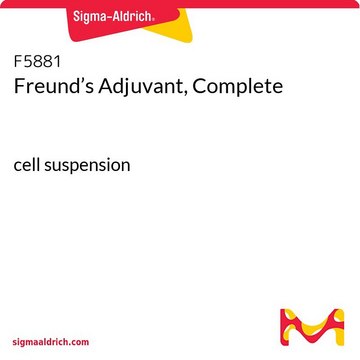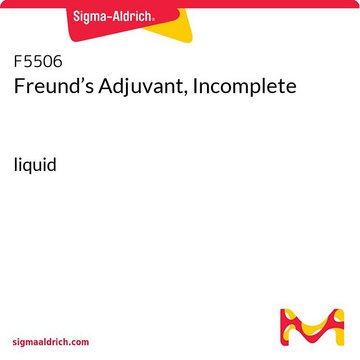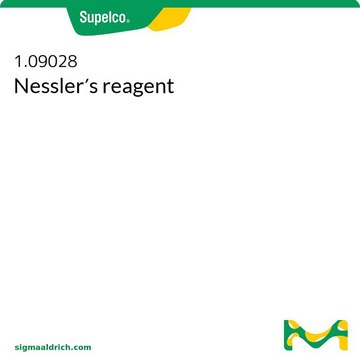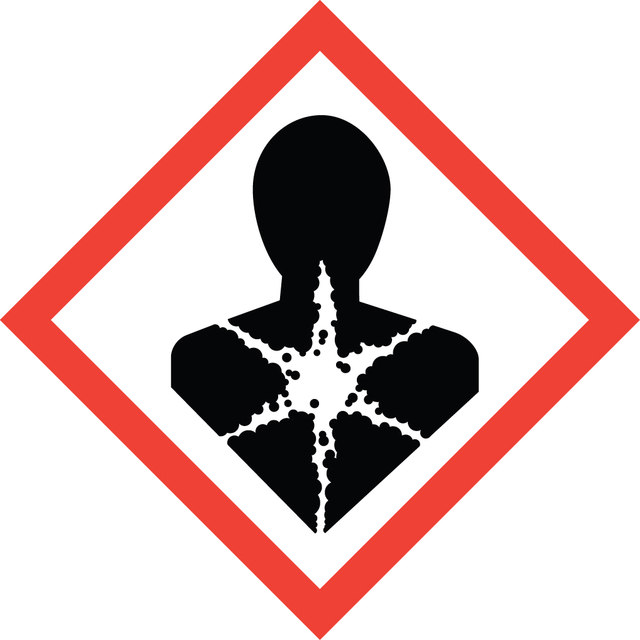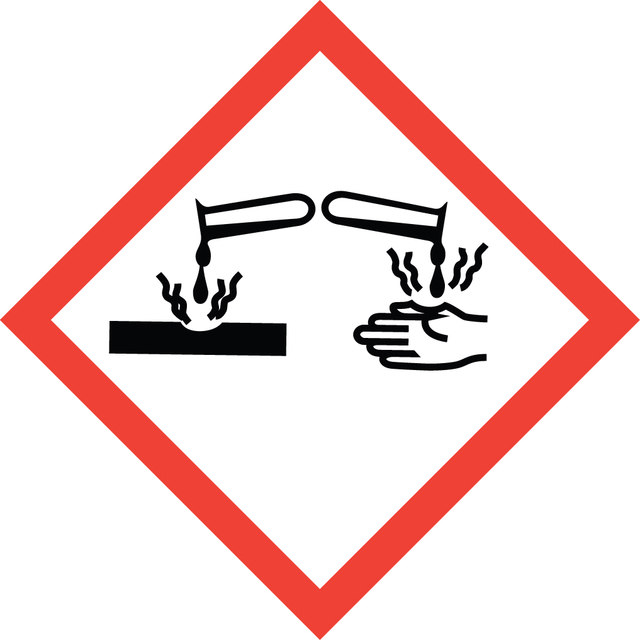03553
Griess′ reagent for nitrite
for microscopy
Synonym(s):
Griess-Ilosvays Reagent for nitrate, Lunge’s Reagent
About This Item
Recommended Products
grade
for microscopy
form
liquid
impurities
2-naphthylamine
acetic acid
refractive index
n20/D 1.353
density
1.037 g/mL at 20 °C
application(s)
food and beverages
general analytical
General description
Signal Word
Danger
Hazard Statements
Precautionary Statements
Hazard Classifications
Carc. 1A - Eye Dam. 1 - Skin Corr. 1B
Storage Class Code
6.1C - Combustible acute toxic Cat.3 / toxic compounds or compounds which causing chronic effects
WGK
WGK 3
Flash Point(F)
Not applicable
Flash Point(C)
Not applicable
Personal Protective Equipment
Choose from one of the most recent versions:
Certificates of Analysis (COA)
Don't see the Right Version?
If you require a particular version, you can look up a specific certificate by the Lot or Batch number.
Already Own This Product?
Find documentation for the products that you have recently purchased in the Document Library.
Which document(s) contains shelf-life or expiration date information for a given product?
If available for a given product, the recommended re-test date or the expiration date can be found on the Certificate of Analysis.
How do I get lot-specific information or a Certificate of Analysis?
The lot specific COA document can be found by entering the lot number above under the "Documents" section.
When using Product 03553, Griess’ reagent for nitrite, what product should I use to make a nitrite standard curve?
Sodium nitrite (Product No. S2252 or 237213) can be used to make a standard curve. A typical standard curve would cover the range of 0-100 microMolar nitrite.
Will phenol red interfere with the Griess reaction, Product 03553, Griess’ reagent for nitrite?
No. Phenol red (which is a pH indicator present in some cell culture media) will not interfere with the Griess reaction.
Is there an enzymatic method to convert nitrate to nitrite?
A coupled assay to convert nitrate to nitrite has been published by Grisham, M.B., et al., Quantitation of nitrate and nitrite in extracellular fluids. Methods Enzymol., 268, 237-246 (1996). For this protocol, we recommend using Product No. N7265 (Nitrate Reductase), Product No.L1378 (L-Lactic Dehydrogenase), Product No.N1630 (NADPH), Product No. P8574 (Sodium pyruvate) and Product No. F6625 (Flavin adenine dinucleotide disodium salt).
What is the difference between Product G4410 Griess reagent (modified), and Product 03553, Griess reagent?
There are many formulations of the Griess Reagent. The formulations for these products are similar; both are proprietary.
How do I find price and availability?
There are several ways to find pricing and availability for our products. Once you log onto our website, you will find the price and availability displayed on the product detail page. You can contact any of our Customer Sales and Service offices to receive a quote. USA customers: 1-800-325-3010 or view local office numbers.
What is the Department of Transportation shipping information for this product?
Transportation information can be found in Section 14 of the product's (M)SDS.To access the shipping information for this material, use the link on the product detail page for the product.
My question is not addressed here, how can I contact Technical Service for assistance?
Ask a Scientist here.
Our team of scientists has experience in all areas of research including Life Science, Material Science, Chemical Synthesis, Chromatography, Analytical and many others.
Contact Technical Service